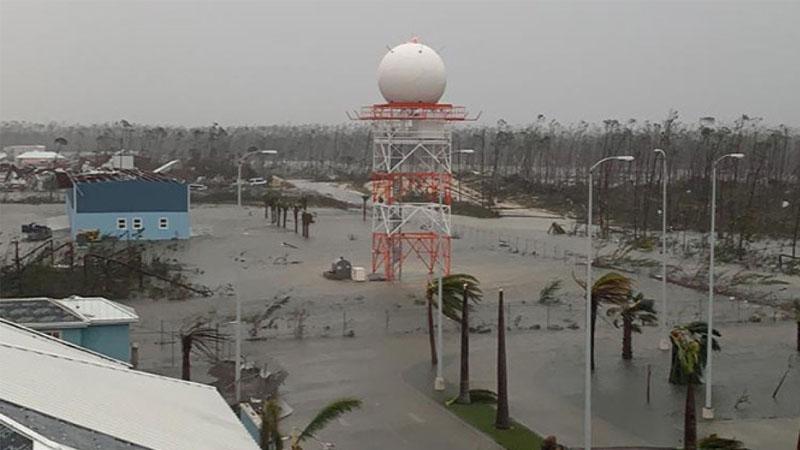Weather resiliency and early warnings in The Bahamas
The island nation gains complete situational awareness to preserve lives and infrastructure
The Client: The Bahamas Department of Meteorology
Vaisala provided:
4 Doppler Weather Radars
16 Automatic Weather Stations (AWS)
9 AviMet® Automatic Weather Observation Systems (AWOS)
AviMet® Windshear Alert System
NM10 Network Manager
According to the World Meteorological Organization, investing in meteorological service and research results in a tenfold return of socio-economic benefits. Early warning systems, especially when part of a holistic approach to meteorological service investments, are critical to saving lives and property around the world.
The Bahamas is one of the most popular tourist destinations in the world — and is also in the path of hurricanes. The official hurricane season runs from early June through November, and affects every part of this archipelago — about 700 islands spread over 161,000 square kilometers of ocean. The weather in the northern islands can be completely different from that in the southernmost islands. The islands are low and flat, and are especially subject to flooding from heavy rains and storm surges.
The challenge: Large geographical area with limited weather coverage
The Bahamas had a single Doppler Weather Radar located at one airport, but the lack of insight in other locations left several islands vulnerable to approaching storms. The Bahamas Department of Meteorology, who is responsible for tracking weather and operates the weather radar, recognized the limited capacity and sought more complete coverage across the country.
In a small island nation like The Bahamas, a comprehensive storm detection and warning system can save lives. Based on their long history of working with Vaisala technology, the Department engaged Vaisala to help make the country stormproof.
The solution: Comprehensive insights with modernized technology
In late 2016, The Bahamas decided to invest in a new nationwide meteorology network to improve their weather forecasting capabilities. The solution included 4 Vaisala Doppler Weather Radars plus a radar upgrade on 5 islands, 9 AviMet® Automatic Weather Observation Systems (AWOS) for airports, 16 Vaisala Automatic Weather Stations, AviMet Windshear Alert System for Nassau Airport with anemometer LLWAS and weather radar windshear integration, automatic cloud type detection (CB, TCU) based on weather radar data and lightning data, automatic rain shower and hail detection based on weather radar data, NM10 Network Manager to monitor all the Vaisala systems, meteorological forecasting and warning software SmartMet as well as civil works, training and installation services.
Based at airports across the islands, the networked radars and sensor equipment allow The Bahamas Department of Meteorology to see current weather including the presence, speed and severity of tropical cyclones in any area of the country.
The Department is using SmartMet to collect and edit data on all observations, improving their capability to forecast and issue warnings on severe storms. Created by the Finnish Meteorological Institute (FMI), SmartMet integrates and visualizes observation data and tools into a single weather forecasting and warning system. As part of the solution, the Department also gained a meteorological TV studio so they can quickly communicate with the public.
Vaisala began delivering the project in 2017, providing both hardware and software, as well as meteorological training through their partnership with FMI.
Put to the test: Hurricane Dorian
When Hurricane Dorian hit the Bahamas in September 2019, the technology was put to the test. With the weather monitoring and warning solution in place, The Bahamas Department of Meteorology was able to send out more accurate information and alerts which enabled thousands of citizens and organizations to prepare for and seek shelter from the hurricane.
With maximum sustained winds of nearly 300 km/h (over 180 mph), Hurricane Dorian brought the highest wind speeds of an Atlantic hurricane ever recorded at landfall in September. There was extensive damage to structures and many were swept to sea, while 70,000 people were left homeless.
If not for the improved early warnings and comprehensive monitoring, the results could have been much worse.
The benefit: Facing the future with confidence
The three AviMet AWOS on the Northern islands of the Bahamas were destroyed, and Vaisala donated and installed three new ones to help the Bahamas recover from this natural disaster. Not only does the solution help The Bahamas to make data-based decisions on how to manage challenging weather, it helps ensure the continuity of international flights to this tourism dependent area.
The Bahamas now has a reliable early warning system that combines all weather observations for complete situational awareness. They also have greater capacity to issue timely warnings to the public about hazardous weather conditions, preserving lives and property.
"We have over 40 years of history with Vaisala, and Vaisala has provided the most robust and reliable equipment. In this case, it was also important that Vaisala thought of the whole picture for The Bahamas — not just trying to make a deal. Training, for example, was an essential part of the contract for us."
Trevor Basden, Director, The Bahamas Department of Meteorology

Vaisala Weather Radar at Marsh Harbour Airport in the Bahamas, still standing and measuring after Hurricane Dorian

